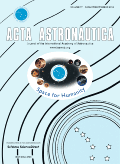
ACTA ASTRONAUTICA
Scope & Guideline
Elevating the Standards of Aerospace Research
Introduction
Aims and Scopes
- Spacecraft Design and Propulsion:
Research in this area covers innovative propulsion systems, including electric and hybrid engines, as well as designs for spacecraft that are optimized for various missions, such as lunar landings and deep space exploration. - Space Environment and Effects:
Studies examining the impact of space conditions on materials, biological systems, and technology, including radiation effects, microgravity impacts, and the behavior of various materials in extreme environments. - Orbital Mechanics and Trajectory Optimization:
Research focusing on the dynamics of space travel, including trajectory planning, orbital maneuvers, and the optimization of flight paths for missions to various celestial bodies. - In-Situ Resource Utilization (ISRU):
Investigations into the extraction and utilization of resources found on celestial bodies, such as lunar regolith, to support sustainable human presence in space. - Human Factors and Space Biology:
Research addressing the physiological and psychological challenges faced by humans in space, including studies on health, performance, and adaptation to microgravity. - Space Debris and Sustainability:
Studies focused on the characterization, tracking, and mitigation of space debris, as well as strategies for sustainable space operations. - Advanced Materials and Manufacturing Technologies:
Research into novel materials and manufacturing techniques, including the use of additive manufacturing for space applications and the development of materials capable of withstanding harsh space conditions.
Trending and Emerging
- Artificial Intelligence and Machine Learning Applications:
The integration of AI and machine learning in spacecraft navigation, control systems, and data analysis is becoming increasingly prominent, showcasing the potential for automation and enhanced decision-making in space missions. - Space Resource Utilization and Sustainability:
Research focusing on ISRU techniques and sustainable practices for long-term human presence in space is on the rise, driven by the need for self-sufficiency in future missions. - Space Debris Mitigation and Management:
With the growing concern over space debris, research aimed at tracking, characterizing, and mitigating debris is gaining importance, reflecting a proactive approach to maintaining a sustainable space environment. - Bioengineering and Life Support Systems:
Studies on bioengineering solutions and life support systems that utilize biological processes for air and water recycling, food production, and waste management are trending, emphasizing the need for closed-loop systems in space. - Advanced Propulsion Technologies:
Emerging propulsion technologies, including electric propulsion and novel combustion methods, are gaining attention as researchers explore efficient ways to enable deeper and more complex space missions. - Interdisciplinary Approaches to Space Missions:
Research that combines insights from fields such as psychology, sociology, and environmental science with astronautics is becoming more prevalent, highlighting the importance of holistic approaches to space exploration.
Declining or Waning
- Traditional Rocket Propulsion Systems:
There has been a noticeable decrease in research specifically dedicated to conventional rocket propulsion systems, as newer technologies like electric and hybrid propulsion gain traction and research funding. - Basic Spacecraft Dynamics:
Fundamental studies on spacecraft dynamics are becoming less common as the field moves toward more complex, multi-body dynamics and control strategies that account for non-linearities and uncertainties. - In-depth Analytical Studies of Existing Technologies:
Research that solely focuses on the analytical study of existing technologies, without proposing new solutions or enhancements, appears to be declining, as the field emphasizes innovation and practical applications. - Conventional Astronaut Training Techniques:
Research in conventional astronaut training methods seems to be waning as new technologies, such as virtual reality and AI-driven simulations, begin to dominate the training landscape.
Similar Journals

AEROSPACE AMERICA
Charting New Territories in Aerospace ResearchAerospace America, published by the American Institute of Aeronautics and Astronautics, stands as a crucial platform within the field of aerospace engineering. With over 30 years of dedication to advancing aerospace knowledge, the journal provides a comprehensive exploration of topics ranging from cutting-edge aerospace technology to aviation policy and industry developments. While it currently resides in the fourth quartile of the Scopus rankings for aerospace engineering, the journal aims to enhance its visibility and impact among researchers, professionals, and students. Access to its content is traditionally through institutional subscriptions, aligning with its mission to foster informed discussions and innovations in aerospace. As professionals and academics navigate the evolving landscape of aeronautics, Aerospace America remains a pivotal resource for those committed to the future of aerospace exploration and technology.

Advances in Astronomy and Space Physics
Fostering Innovation in the Study of the Cosmos.Advances in Astronomy and Space Physics is an esteemed journal dedicated to the exploration and dissemination of research in the expansive fields of astronomy and space science. Published by Taras Shevchenko National University of Kyiv, this journal provides a platform for researchers, professionals, and students to share groundbreaking studies and innovations. With an ISSN of 2227-1481, it covers a wide range of subjects including astrophysics, planetary sciences, and space exploration technologies, thereby fostering interdisciplinary collaboration. Although not an Open Access journal, it maintains a commitment to high-quality, peer-reviewed content that contributes significantly to the advancement of scientific knowledge. The journal's mission is to promote sustainable practices in space research while also exploring the implications of discoveries on Earth and beyond. By maintaining rigorous publication standards, Advances in Astronomy and Space Physics aims to serve as a critical resource for those involved in the ever-evolving study of our universe.
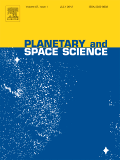
PLANETARY AND SPACE SCIENCE
Charting New Frontiers: The Intersection of Space and Planetary SciencePLANETARY AND SPACE SCIENCE is a leading journal dedicated to the interdisciplinary field of astral studies, encompassing both planetary science and the exploration of space. Published by PERGAMON-ELSEVIER SCIENCE LTD in the United Kingdom, this journal has been pivotal since its inception in 1959, continually contributing to advancements in research about planetary bodies, their atmospheres, and the broader cosmic landscape. With an impressive impact factor, PLANETARY AND SPACE SCIENCE ranks in the second quartile of Astronomy and Astrophysics and the third quartile in Space and Planetary Science as of 2023, showcasing its scholarly significance. The journal aims to provide a platform for the dissemination of cutting-edge research, emphasizing the critical role of space exploration and planetary studies in understanding our universe. Researchers, professionals, and students alike are encouraged to explore the wealth of knowledge presented in its pages, fostering a deeper comprehension of the phenomena that shapes both our solar system and beyond.

CEAS Space Journal
Pioneering insights in aerospace engineering and planetary science.CEAS Space Journal, published by SPRINGER WIEN, serves as a critical platform for advancing knowledge in the fields of aerospace engineering and space science. With an ISSN of 1868-2502 and an E-ISSN of 1868-2510, this journal has been at the forefront of scholarly communication since its inception in 2011, showcasing cutting-edge research that spans to the present day (2024). The journal holds a solid reputation, ranking in the Q2 quartile for Aerospace Engineering and Q3 for Space and Planetary Science as of 2023, illustrating its impactful contributions within these disciplines. Scopus rankings further underline its prominence, placing it in the 70th percentile among aerospace engineering journals. Although it is not an open access publication, the insights published in the CEAS Space Journal are invaluable for researchers, professionals, and students alike, providing essential studies and reviews that push the boundaries of aerospace innovation and planetary exploration. The journal's commitment to quality and rigor makes it an indispensable resource for anyone looking to deepen their understanding of contemporary challenges and technological advancements in space science.
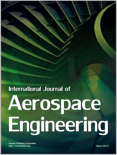
International Journal of Aerospace Engineering
Exploring New Frontiers in Aerospace TechnologyThe International Journal of Aerospace Engineering, published by HINDAWI LTD, stands at the forefront of innovation and research in the field of aerospace engineering. With an impact factor reflecting its contributions to the discipline and classified in Quartile 3 (Q3) for the year 2023, this journal provides a platform for high-quality, peer-reviewed articles that delve into advancements and challenges in aerospace technology and applications. Since its inception in 2008, the journal has embraced an Open Access model, promoting unrestricted dissemination of research findings to foster collaboration and knowledge sharing among researchers, professionals, and academia. The journal covers a broad spectrum of topics, aiming to enhance understanding and give insight into aerospace engineering's multifaceted aspects. With its coverage in the Scopus database, ranking 71 out of 153 in the aerospace engineering category, the journal is a valuable resource for those engaged in this dynamic field, ensuring that high-impact research receives the visibility it deserves.

Aerospace Research in Bulgaria
Fostering collaboration in the aerospace community.Aerospace Research in Bulgaria is a prestigious academic journal dedicated to advancing the field of aerospace engineering and technology. Published by the BULGARIAN ACADEMY OF SCIENCES, SPACE RESEARCH & TECHNOLOGY INSTITUTE (SRTI-BAS), this journal serves as a key platform for researchers, engineers, and professionals seeking to share original research, innovative technologies, and critical reviews related to aerospace applications. With the ISSN 1313-0927 and E-ISSN 2367-9522, the journal aims to contribute significantly to the global aerospace community. Although the journal operates under a traditional access model, it emphasizes the importance of research collaboration and disseminating knowledge in the ever-evolving aerospace sector. The editorial team is committed to maintaining high standards in peer review, making it an essential resource for academics and practitioners alike. Located at ACAD. GEORGI BONCHEV STR., SOFIA 1113, BULGARIA, this journal not only highlights Bulgarian contributions to aerospace research but also aims to engage with a broader international audience, fostering advances that propel the industry forward.

New Space-The Journal of Space Entrepreneurship and Innovation
Empowering the Next Generation of Space InnovatorsNew Space - The Journal of Space Entrepreneurship and Innovation is a pivotal publication dedicated to advancing the field of aerospace through innovative research and practical insights. Published by Mary Ann Liebert, Inc., this journal serves as a crucial platform for scholars, engineers, and entrepreneurs interested in the burgeoning sectors of space technology and commercial space endeavors. With an ISSN of 2168-0256 and an E-ISSN of 2168-0264, New Space explores the intersection of engineering, sustainability, and business within the aerospace industry. The journal's impact is highlighted by its Q3 ranking in multiple categories, including Aerospace Engineering and Astronomy and Astrophysics, signifying its relevance in contemporary research dialogues. Although currently closed access, the journal's dedication to fostering innovations is clear as it addresses critical topics from safety and risk management to energy technologies and tourism in space contexts. Researchers and professionals seeking to influence the future of space entrepreneurship will find valuable content and a collaborative community within these pages, making New Space an essential resource in its field.
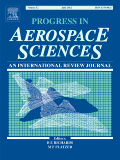
PROGRESS IN AEROSPACE SCIENCES
Elevating the future of flight with cutting-edge insights.PROGRESS IN AEROSPACE SCIENCES is a prestigious journal published by PERGAMON-ELSEVIER SCIENCE LTD, recognized as a leading platform in the field of aerospace engineering, mechanical engineering, and mechanics of materials. With an impressive history dating back to 1961, the journal covers a wide spectrum of topics pivotal to advancing aerospace technology and innovation. Its recent ranking as Q1 in multiple engineering categories underscores its significance, ranking #1 in Aerospace Engineering and placing within the top 20 percentile in both Mechanical Engineering and Mechanics of Materials, according to Scopus assessments. Researchers, professionals, and students looking to engage with high-impact research will find PROGRESS IN AEROSPACE SCIENCES an invaluable resource, offering insights into cutting-edge developments and methodologies. Although it does not operate under an open-access model, the journal upholds rigorous peer-review standards, ensuring that the published content meets the highest academic integrity. Situated in the United Kingdom, it plays a critical role in fostering international collaboration and knowledge-sharing in the aerospace sector.
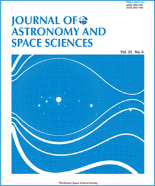
Journal of Astronomy and Space Sciences
Where Groundbreaking Research Meets Open Access.The Journal of Astronomy and Space Sciences, published by the Korean Space Science Society, is a premier open-access platform dedicated to advancing the fields of astronomy, astrophysics, and space sciences. Established in 1984, the journal has been instrumental in disseminating high-quality research findings, fostering collaboration among scientists globally, and providing insights into the dynamics of our universe. With an ISSN of 2093-5587 and an E-ISSN of 2093-1409, the journal has gained notable recognition, currently ranking in the Q3 quartile in Earth and Planetary Sciences and Physics and Astronomy as of 2023. Although the journal's H-Index is currently unspecified, its commitment to rigorous peer-review processes and open-access availability ensures that groundbreaking research is accessible to a wide audience. Based in Seoul, South Korea, the journal is poised to continue supporting innovative research through 2024 and beyond. Researchers, professionals, and students alike will find valuable resources and opportunities within its pages, further establishing this journal as a crucial resource in the exploration of the cosmos.

NPJ Microgravity
Exploring the Frontiers of Microgravity ResearchNPJ Microgravity, published by NATURE PORTFOLIO, is a premier open-access journal dedicated to advancing research in microgravity environments, complementing extensive studies in fields as diverse as Agricultural and Biological Sciences, Biochemistry, Materials Science, Medicine, Physics, and Space and Planetary Science. Since its inception in 2015, the journal has rapidly established itself as an influential platform for disseminating cutting-edge research, evidenced by its Q1 quartile rankings across multiple disciplines and impressive Scopus rankings, including a top 10 placement in Physics and Astronomy. Based in the United Kingdom with an address of HEIDELBERGER PLATZ 3, BERLIN 14197, GERMANY, NPJ Microgravity not only champions innovative studies but also promotes collaborations that can translate scientific knowledge into tangible benefits for society. As an open-access journal, it offers unparalleled accessibility to high-quality research, making it an essential resource for researchers, professionals, and students with a keen interest in the applications and implications of microgravity research.